3. Inside the DeSoc Ecosystem and Architecture

What You’ll Uncover in This Chapter
- How does DeSoc work? Understand the foundational layers of decentralized social platforms—base, social graph, and applications.
- Which platforms lead the way? Explore key players like Lens, Farcaster, and CyberConnect, and how they redefine connectivity.
- Is decentralization too complex? Learn how hybrid models balance blockchain transparency with practical scalability.
- What drives engagement in DeSoc? See how incentives like tokens, NFTs, and community governance are reshaping the landscape.
As an entrepreneur or founder entering the DeSoc space, understanding the landscape is critical to building a successful application. The Onchain Research Team examined over 60 DeSoc projects, selecting key platforms with active communities and working products. Our goal was to assess traction, user engagement, and the overall impact of these platforms.
3.1 DeSoc ecosystem: A snapshot
To guide you through the DeSoc ecosystem and help you identify opportunities, we’ve categorized it into three layers: 1. Base layer, 2. Social graph layer 3. Application layer:
1. Base layer:
The base layer refers to the fundamental blockchain infrastructures that power decentralized applications. These include Ethereum, Solana, Optimism, Polygon, and other blockchains that offer the necessary support for smart contracts, security, and scalability. These base layers are crucial for ensuring the decentralized nature of the platforms, allowing for trustless transactions and storage.
Actionable tip: When conceptualizing your DeSoc app, evaluate the base layer for scalability, transaction costs, and ecosystem compatibility. For example, Farcaster, Lens Protocol, and Friend.tech leverage Ethereum Layer 2 solutions like Base, Polygon, or Optimism to ensure low fees, high throughput, and compatibility with the Ethereum Virtual Machine (EVM).
2. Social graph layer:
The social graph layer manages decentralized identities, social connections, and content ownership. In essence, this layer maps relationships and interactions among users, similar to how traditional social media platforms manage your “friends” or “followers.” However, in a decentralized context, users retain ownership of their social data, and these connections can be carried across different platforms within the same protocol.
Key examples include Lens Protocol, Farcaster, and CyberConnect. Some systems, like Hive or Steemit, combine both the base layer and social graph protocol, meaning they use their native blockchain infrastructure to handle social interactions and data ownership simultaneously.
In traditional social media, these connections are locked to one platform. With decentralized social graphs, users can own and transfer their connections across applications. This means that a user on Hey, an application built on Lens Protocol, can use the same social graph to engage with another application built on the same protocol.
Entrepreneur’s insight: When building your DeSoc app, think about how you can leverage existing social graphs like Lens or Farcaster. This will allow users to seamlessly transition between your app and other platforms, enhancing user retention and reducing onboarding friction.
3. Application layer:
This final layer includes the application interfaces or front-end platforms where users engage with the decentralized social ecosystem. These platforms provide user-friendly interfaces for creating content, engaging with communities, and monetizing interactions. This is the layer where users actually see and interact with the decentralized web.
Examples include:
- Warpcast (built on Farcaster) allows users to post content and manage their identity in a decentralized way.
- Hey or Lenspeer (running on Lens Protocol) provides users with a Twitter-like interface where they can publish posts, share content, and engage with others, all while maintaining control over their social data.
The following DeSoc Ecosystem Map shows the projects the Onchain Team’s research identified and key players and illustrates their roles across the base layer, social graph layer, and application layer. The graphic provides a holistic overview of how the current DeSoc ecosystems as of September 2024.
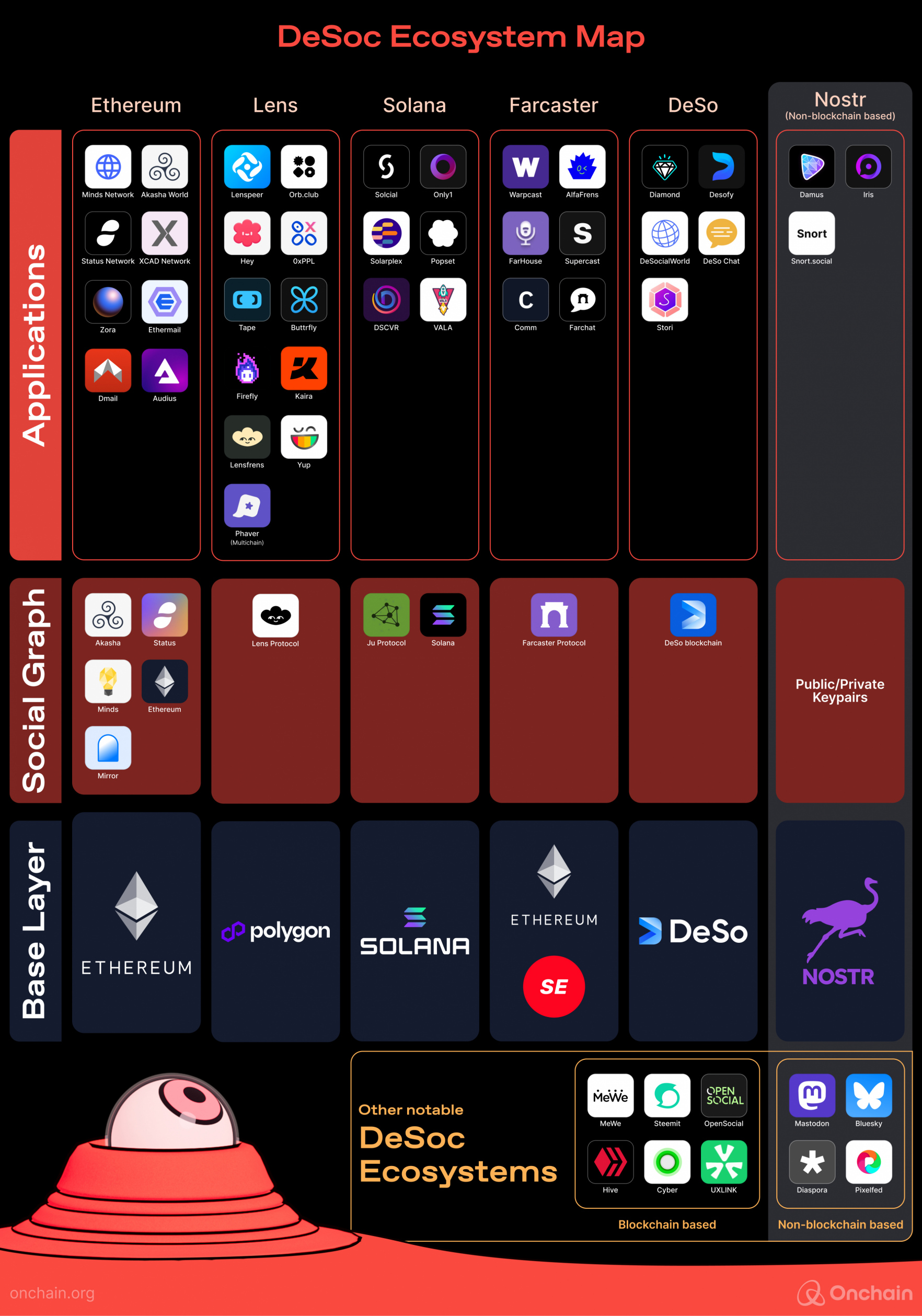
For a broader perspective below you’ll find a more detailed Sector Map that categorizes projects based on their specific roles, such as microblogging, community forums, content monetization, or other functionalities.
It is important to note that these categories do not fit each project perfectly. Many have broad ambitions and, similar to Web2 social media platforms, tap into multiple social media sectors. However, it is evident that most DeSoc projects are either X/Weibo-like applications or fall under blogging & NFT-based monetization comparable to platforms like Medium or Patreon.
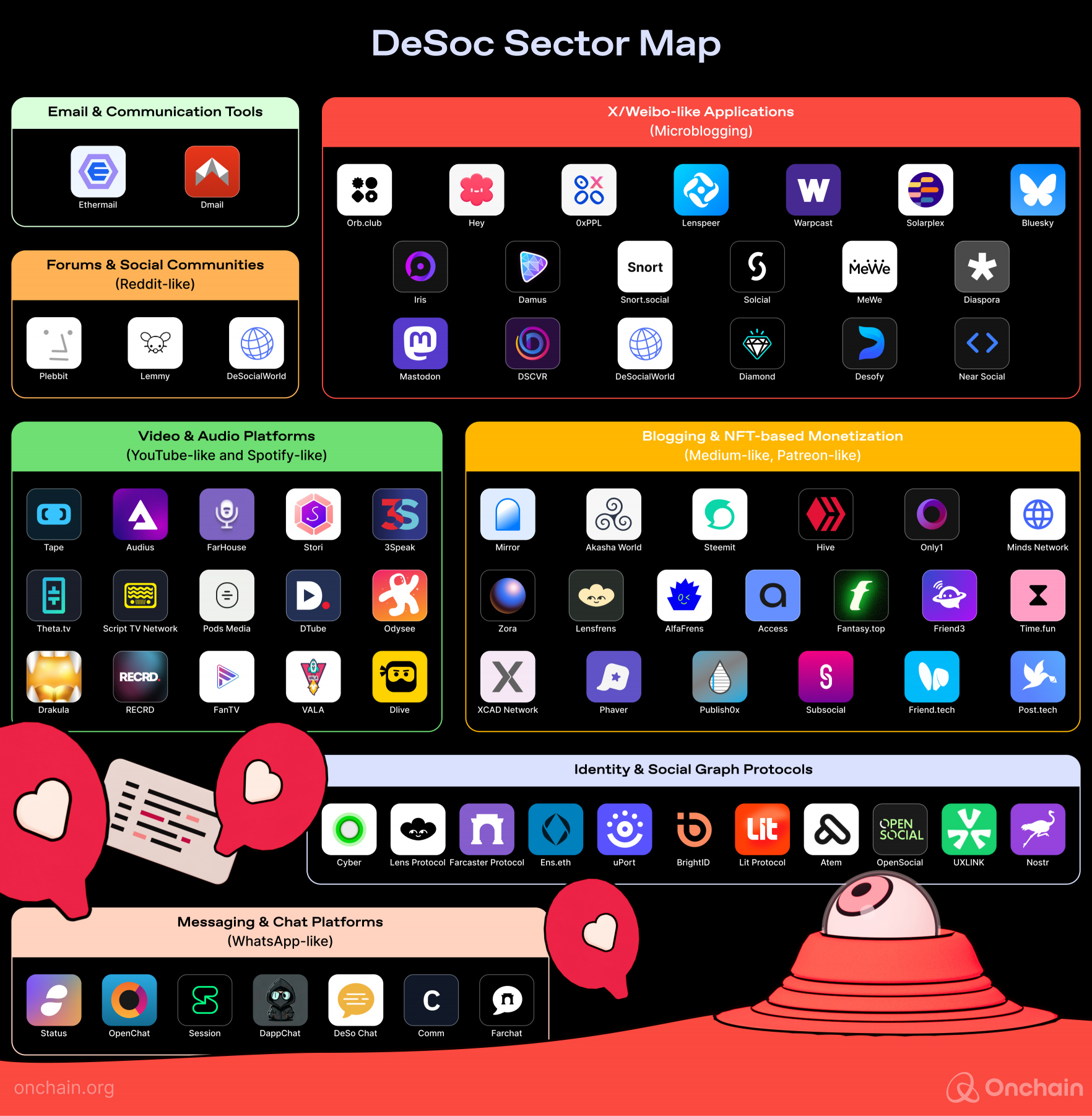
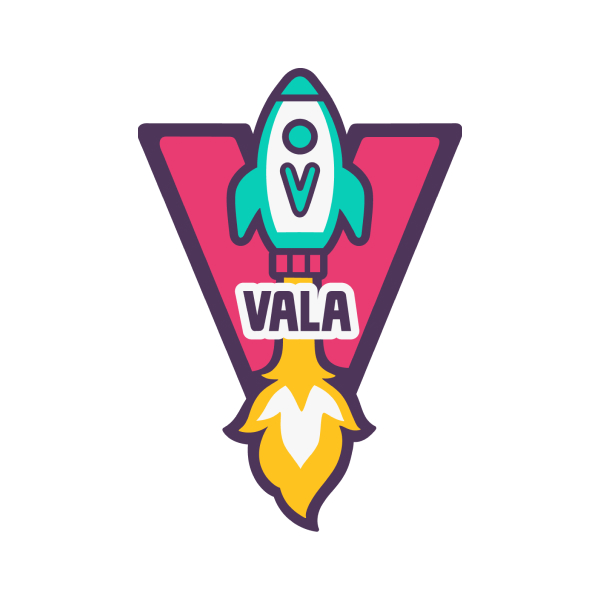
Sponsored content by VALA
VALA: The Future of Social Trading in the Creator Economy
VALA is a cutting-edge social trading app that merges the worlds of finance and the creator economy, making it easy for users to trade meme stocks and cryptocurrencies directly from influencer-driven content. With a user-friendly interface, VALA abstracts away the complexities of traditional crypto wallets, allowing even novice traders to engage with the decentralized finance (DeFi) space effortlessly.
At the heart of VALA lies its unique integration with the creator economy. Content creators on VALA can upload and share videos, enabling followers to buy and sell assets in real time, directly through the app. Imagine following a tip from your favorite creator and swiping to participate in a trade instantly—no complicated setups, just seamless engagement in real time. This dynamic interaction creates a highly engaging social trading environment where creators earn by sharing their insights with their communities
VALA simplifies the trading experience for everyone, making the DeFi and GameFi space accessible to the everyday user. By removing technical barriers like wallet creation and complex interfaces, VALA ensures that anyone can dive into the world of Web3 with ease.
The platform’s reward system further incentivizes engagement. Users can earn tokens and rewards by following creators, sharing content, and completing trades. Gamification elements such as achievement badges and bonus incentives make the experience more exciting and interactive, while tokens can be used within the app or traded, offering real value to users. VALA creates a vibrant, empowering ecosystem where both creators and users can thrive, merging social interaction with financial empowerment in a fun and rewarding way.
Evaluating relevant projects within the DeSoc ecosystem
To assess which projects in the DeSoc space are gaining traction and are relevant, we can explore multiple key metrics that provide insight into their success. These include monthly unique visitors, market capitalization, and onchain data. Keep in mind that each metric has limitations, so it’s essential to take a holistic approach to fully understand which projects are genuinely making an impact.
Top 10 by monthly unique visitors
Probably the simplest way to measure traction is to look at monthly unique visitors, the number of distinct individuals visiting a platform within a given timeframe. This indicates how many users are engaging with the platform and helps assess its popularity.
The following table ranks and compares active DeSoc apps.
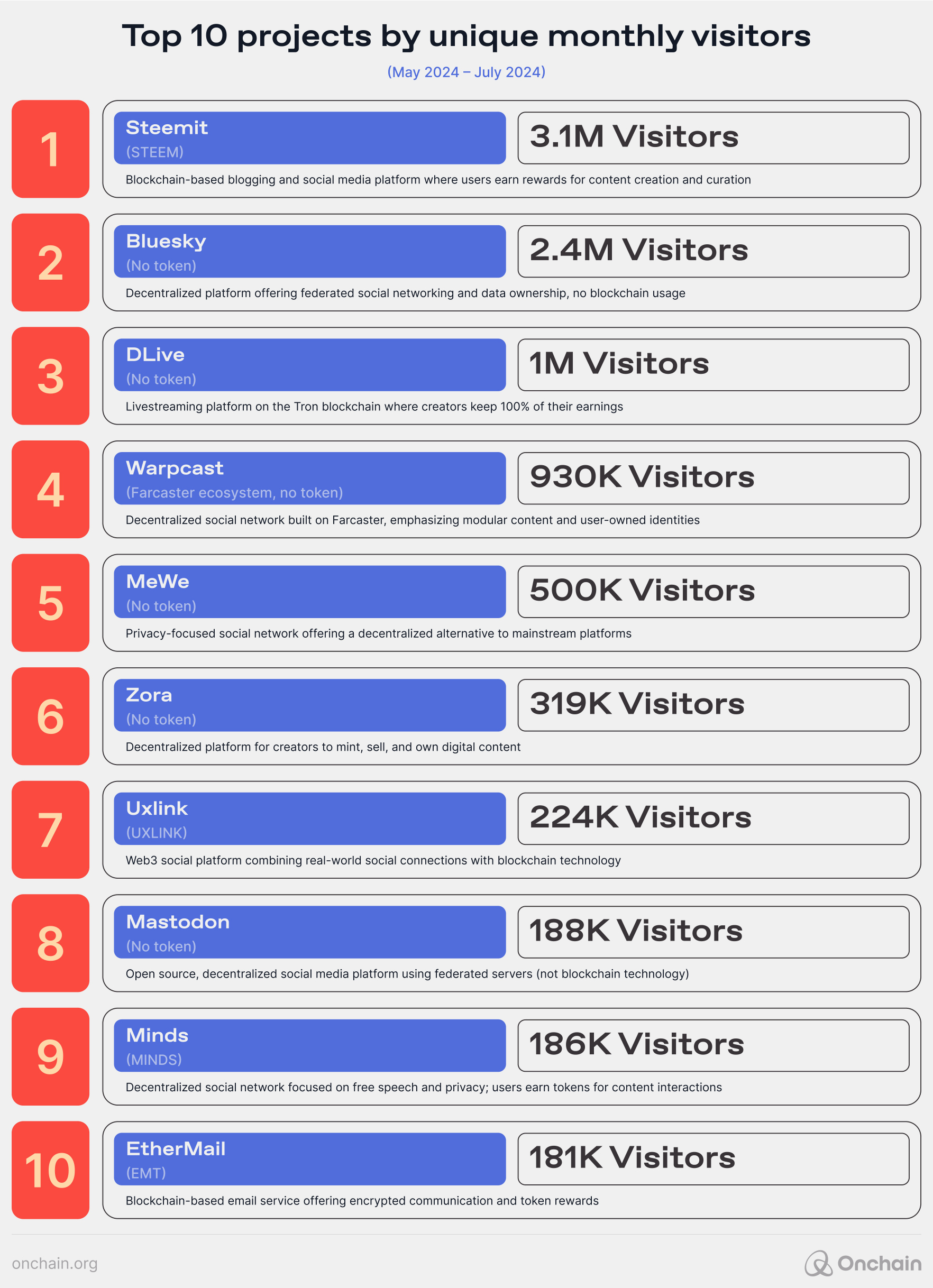
The monthly unique visitors metric has several limitations:
- Bot activity: This may inflate the metric and create a false impression of large numbers of genuine users.
- Paid traffic: This could also artificially increase visitor numbers instead of showing organic engagement.
- Visitors vs. active users: Visitors don’t necessarily translate into active or engaged users. A high visitor count doesn’t guarantee that users interact meaningfully with the platform.
Top 10 DeSoc projects by market capitalization
Another way to gauge the importance of DeSoc projects is by market capitalization. Many DeSoc projects have launched their own tokens to facilitate decentralized governance, incentivize user engagement, and enable creators to monetize content.
In the table below, we rank the top 10 DeSoc projects that have issued tokens, with Audius, Hive, and Steemit emerging as the market leaders.
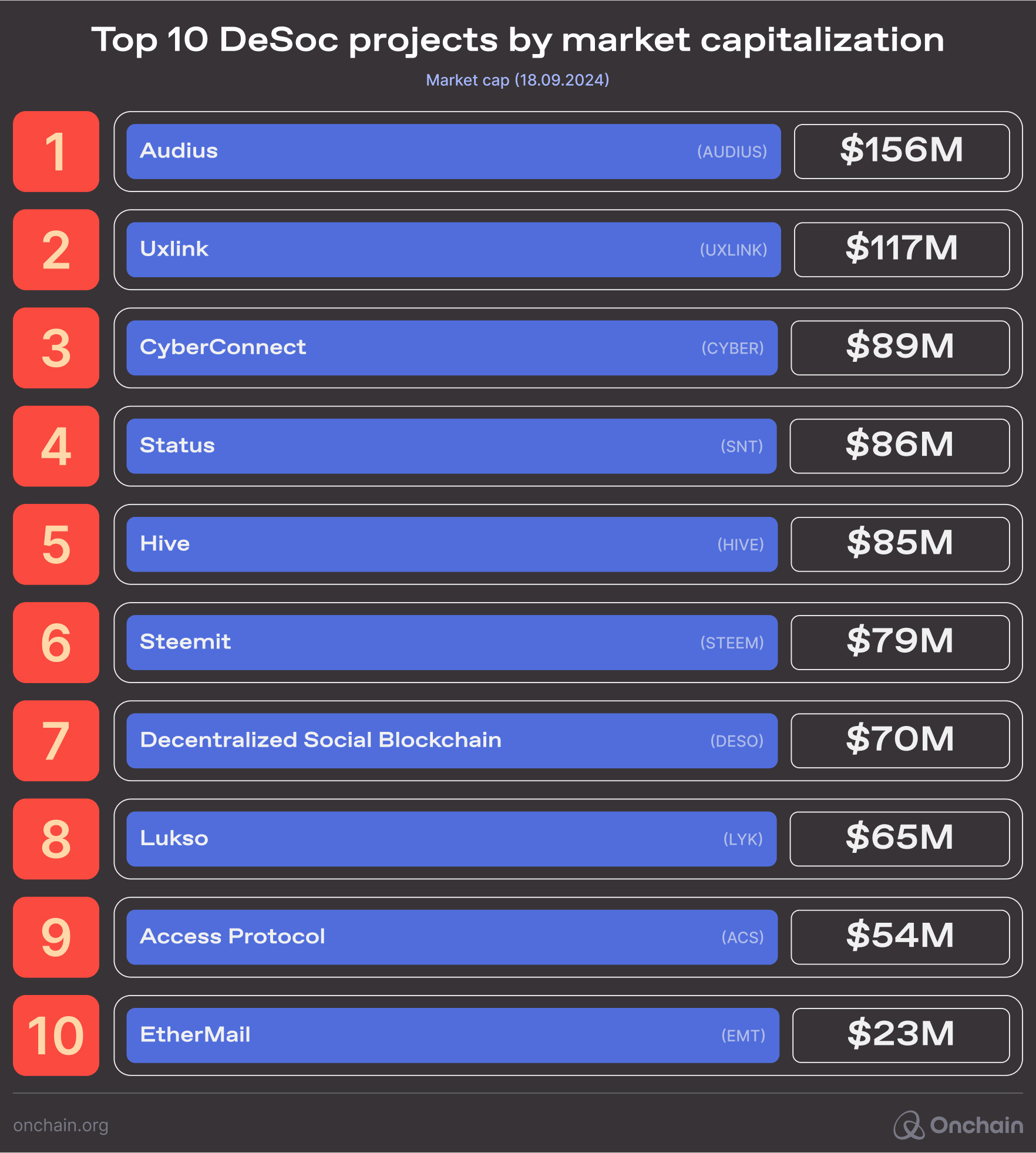
Again, market capitalization alone isn’t a reliable metric for evaluating DeSoc’s success.
Some platforms, like Bluesky, Farcaster, or Lens, don’t have a native network token. Therefore, they don’t appear in these rankings despite having relatively large, engaged user bases.
Additionally, platforms with speculative token trading, such as Audius and Steemit, might have inflated market caps that don’t necessarily reflect active user engagement.
This brings us to onchain activity, which is another compelling metric for evaluating the performance of blockchain-based DeSoc platforms.
Onchain data: An accurate measure of user engagement in DeSoc projects?
Projects like OpenSocial, Lens Protocol, and Farcaster are examples of DeSoc projects where a significant portion of user interaction is processed directly onchain. Unlike traditional social media, some actions on these platforms, such as payments, NFT minting, or other interactions with the underlying base layer of such DeSoc projects, require users to pay small transaction fees. These fees reflect a level of user commitment that goes beyond casual engagement because users likely pay only for actions they value.
For example, on Warpcast, basic social interactions like posting are free, while minting posts as NFTs or sending tokens to other users incurs a transaction fee.
The following chart highlights the onchain social activity of some prominent projects — OpenSocial, Farcaster, DSCVR, and Lens Protocol. Onchain social users are defined as unique daily active wallet addresses.
Remarkably, none of these platforms have their own native token but leverage widely adopted tokens like ETH, POL (ex MATIC), or stablecoins for transactions. This fact challenges the common assumption that Web3 projects require a native token to thrive.
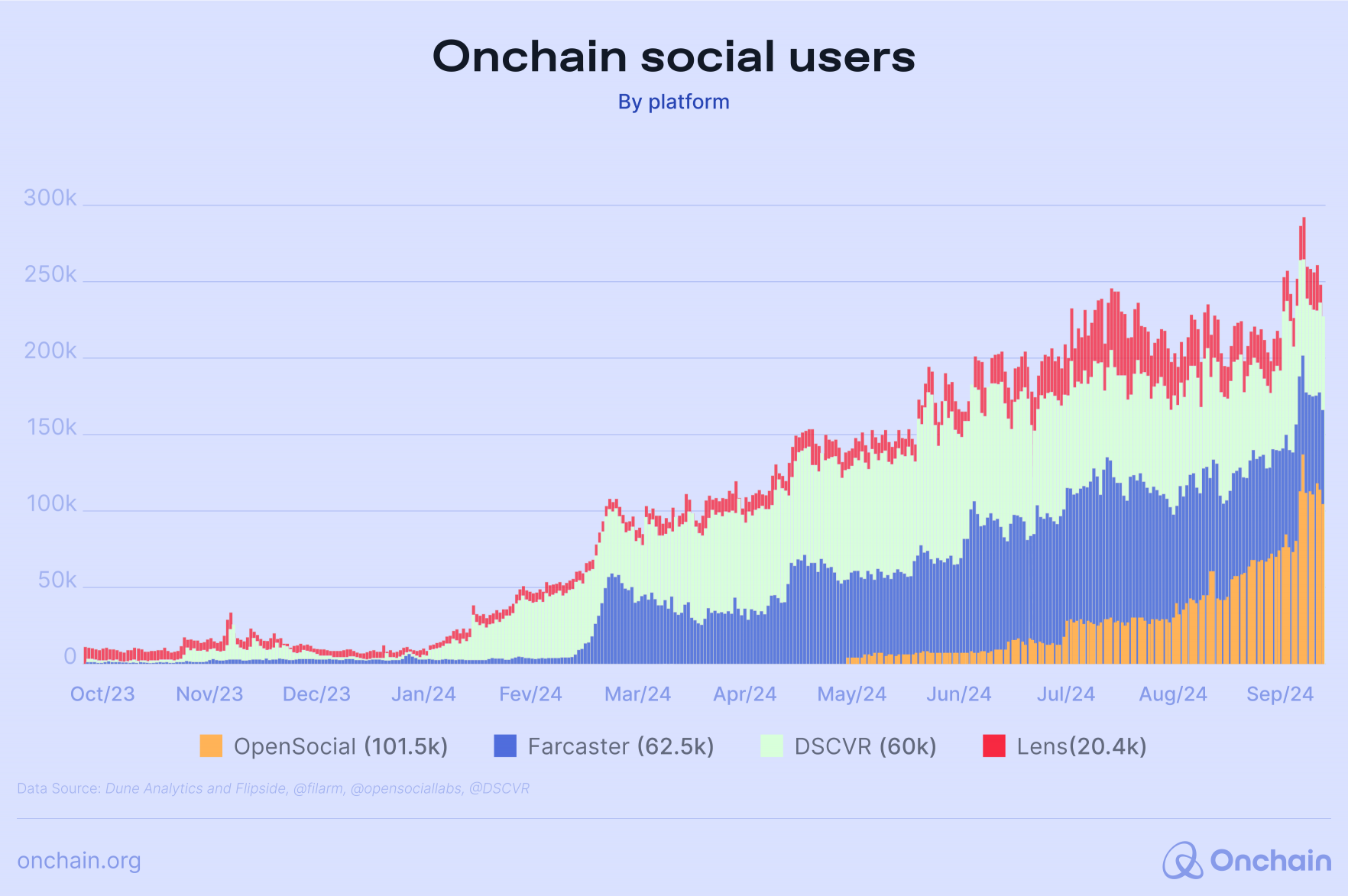
Why onchain data matters:
- User commitment: Willingness to pay for activity signals a high level of interest and engagement.
- Platform utility: The scale of onchain interactions around NFT minting or governance helps assess how much utility users derive from a platform’s features.
- Transparency: Every transaction recorded on the blockchain provides a transparent and verifiable gauge of platform activity.
Limitations:
- Activities that aren’t onchain are excluded.
- Potential bot activity can inflate metrics.
These metrics are a good indicator of initial platform activity and possibly to test features. They are valuable indicators of activity and popularity levels. As such, they can help you reach decisions and plan further app development and marketing.
However, a holistic approach to evaluating DeSoc projects goes beyond onchain data. It requires an understanding of how platforms operate, the extent of decentralization, and the specific use of tokens.
In the upcoming paragraphs, we’ll delve deeper into the makings and workings of DeSoc platforms before we investigate the market and business opportunities for decentralized social apps in chapter four.
3.2 Architecture and mechanics of DeSoc
So far, we have provided you with an overview of the DeSoc ecosystem and its key players. Next, we turn to the fundamental architecture and mechanics that underpin these platforms. Understanding these mechanics is critical for founders and entrepreneurs who are ready for action.
Why a decentralized social graph matters for founders and entrepreneurs in DeSoc
As briefly explained earlier, decentralized social networks are built on the key concept of the decentralized social graph. In practice, owning your social graph means you have full control over your followers, connections, interactions, and content. Within a DeSoc ecosystem like Lens, you can seamlessly carry your social graph across different platforms — whether it’s the Twitter-like app Lenspeer, the short-form content and tipping app Hey, or the video-sharing platform Tape.
This means you can build on top of existing social graphs like Lens, OpenSocial, Uxlink, or Farcaster, reduce onboarding friction, and improve user retention. Instead of starting from scratch, you can leverage these networks to focus on innovating unique features and driving user engagement.
Not all DeSoc platforms are equally decentralized
Decentralization is a broad term, and each platform applies its dedicated approach, offering different levels of user control. Here’s a brief breakdown:
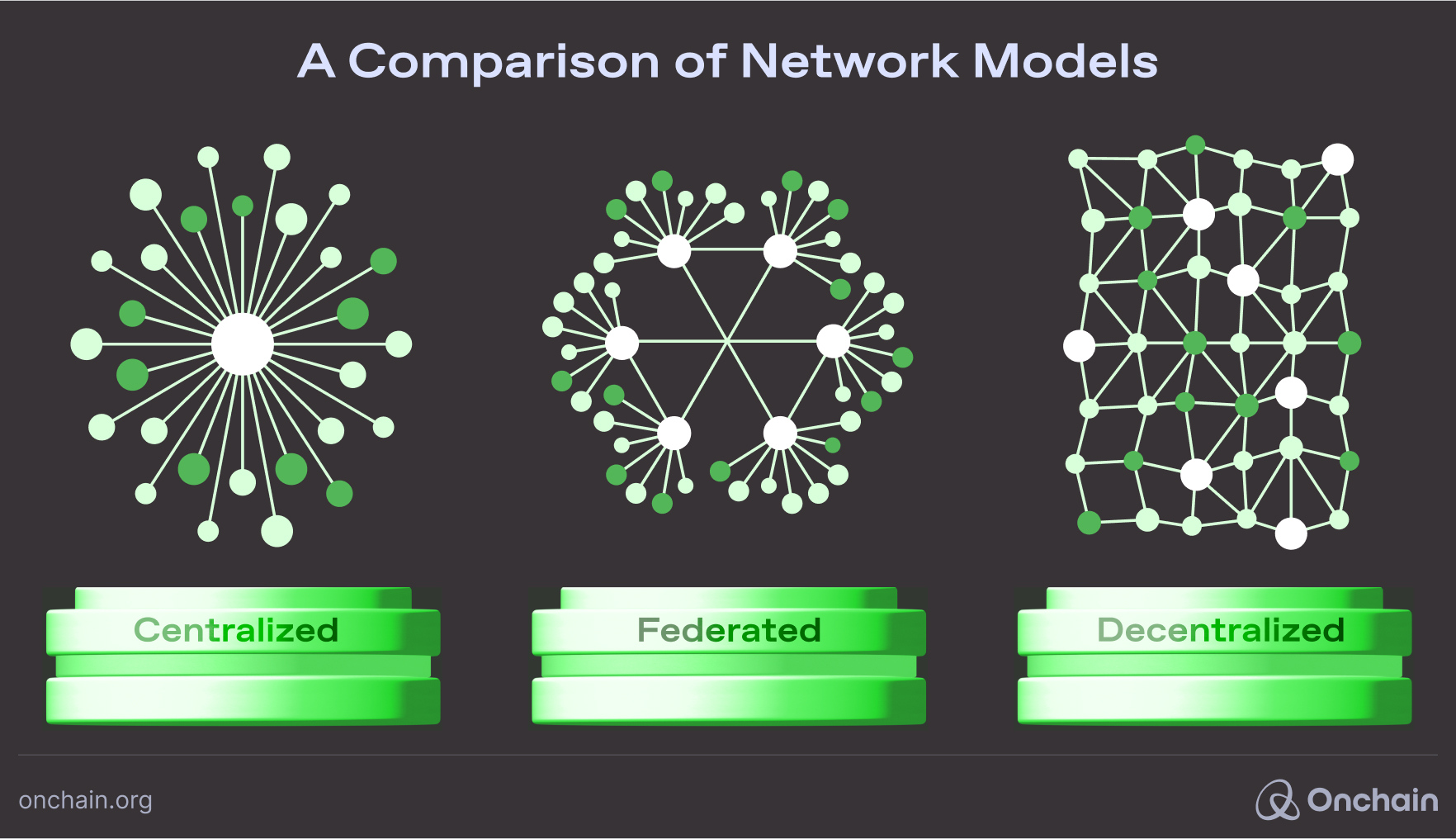
- Federated networks: These work like a collection of independent servers or communities, each with its own rules but connected through shared software. Bluesky and Mastodon are examples of federated networks in which users can move between servers while keeping their data.
- Open protocol networks: These distribute data across various relays rather than storing it centrally. Nostr and Bluesky (using the ADX framework) fall into this category. They allow users to control their data but can face issues if key relays fail.
- Blockchain-based networks: These go a step further, storing all user data on a blockchain, ensuring maximum security and user ownership. Lens Protocol, Farcaster, and DeSo are examples of this model. While these are highly secure, they are also more complex and can be expensive to scale.
Essential differences between TradSoc and DeSoc
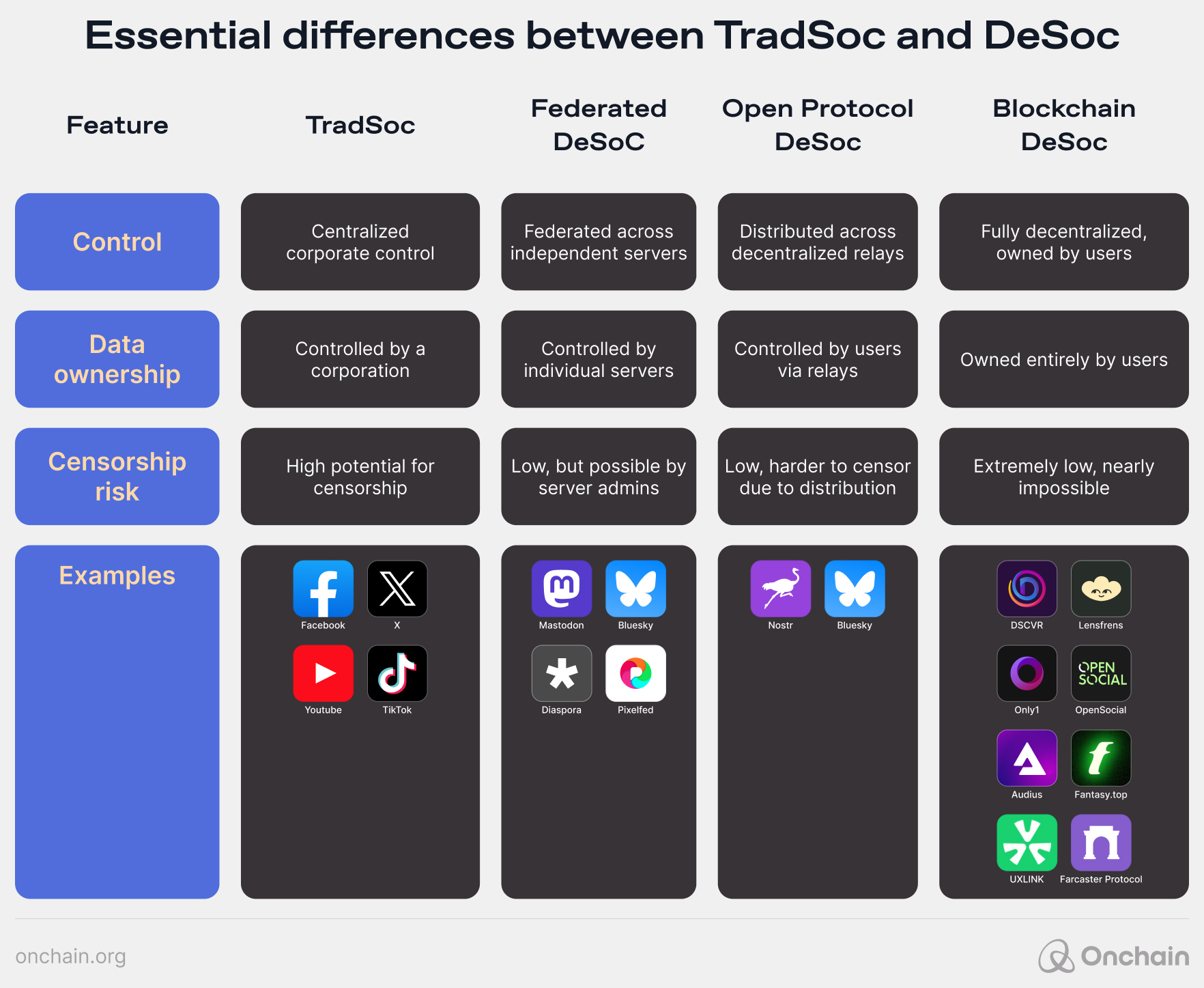
Note: There are also examples of mixed decentralized models. Bluesky operates as a federated network, allowing users to switch between servers, but it also uses open protocols (like ADX) to ensure users can control their data across platforms. This blend offers a unique balance between decentralization and user control.
The cost of decentralization: Blockchain-based DeSoc
While blockchain-based DeSoc platforms provide transparency and user control, they also face significant challenges, particularly data storage costs. Older blockchains like Ethereum weren’t designed to handle the massive data social networks generate. As a result, onchain storage is expensive. For example, storing 1GB of data on Ethereum costs around $115 million.
However, advancements in blockchain technology have introduced more scalable options. Many networks now offer cost-effective solutions for DeSoc applications, especially with the rise of Layer 2 (L2) solutions.
For more information on how Layer 2 solutions are shaping the future of scalable blockchain applications, refer to the Onchain Research Team’s comprehensive report on modular blockchain architectures: “The Future is Modular.”

“Onchain immutability meets offchain dynamism. This is the future of DeSoc, where trust and performance coexist, not compete.” – Dr. Ananya Shrivastava, Research Scientist, Onchain
To balance the need for decentralization and cost-effectiveness, a hybrid approach often proves beneficial:
- Onchain identity and essential data: Core user data, such as profile information, social graph connections, and critical metadata related to posts, remains securely stored on the blockchain. This ensures transparency, immutability, and ownership.
- Offchain storage for content: Decentralized storage systems like IPFS, Arweave, or even offchain servers store the actual content (images, videos, large text posts). These systems provide scalable and cost-efficient storage while retaining decentralization benefits.
- Linking onchain and offchain data: The blockchain stores references or links to the offchain content, ensuring its integrity and traceability. This allows users to verify the authenticity and ownership of content and optimize storage costs.
Examples of Hybrid storage solutions:
Decentralized social networks often use a mix of onchain and offchain storage to manage user data efficiently. Check these examples:
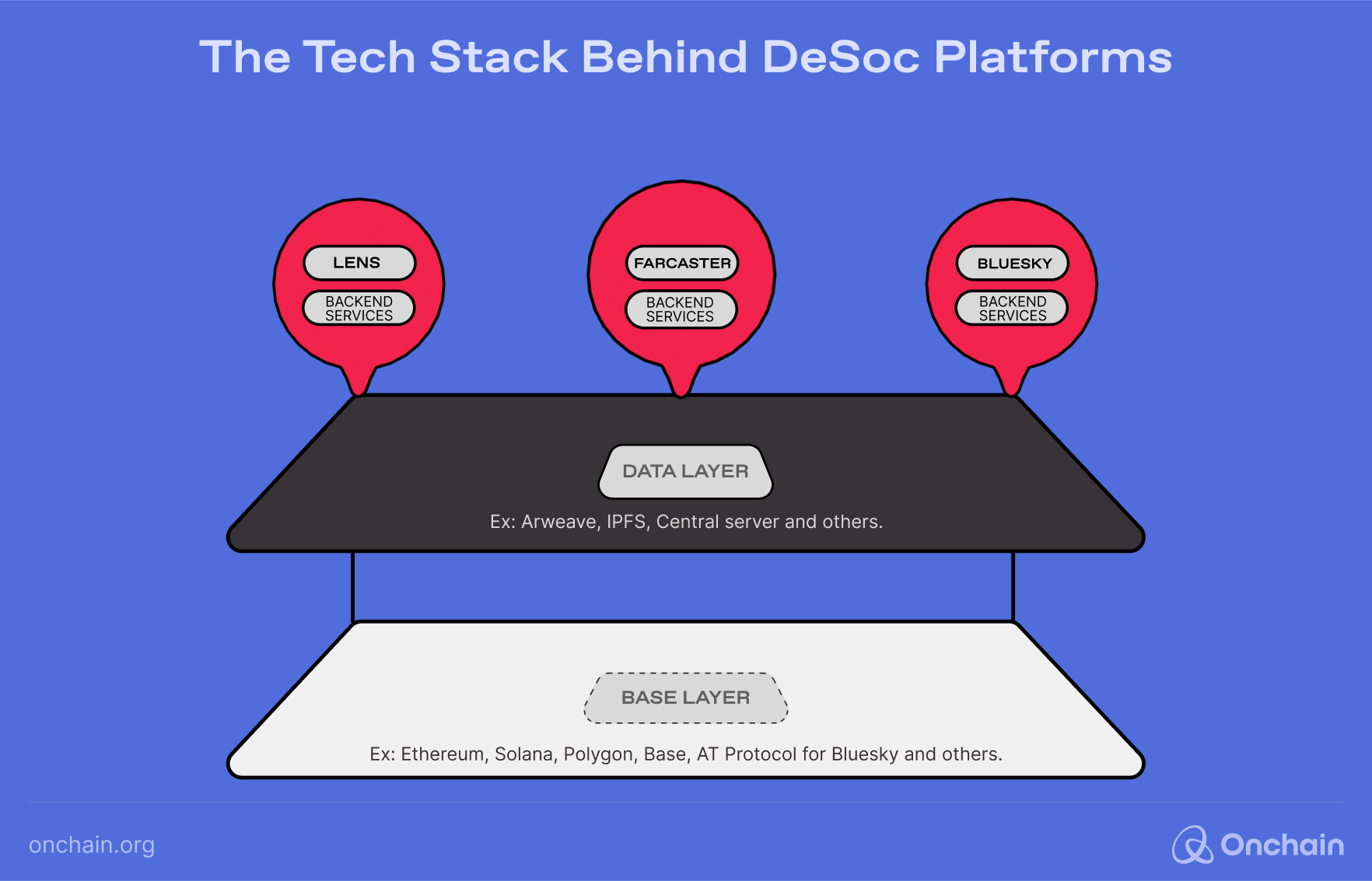
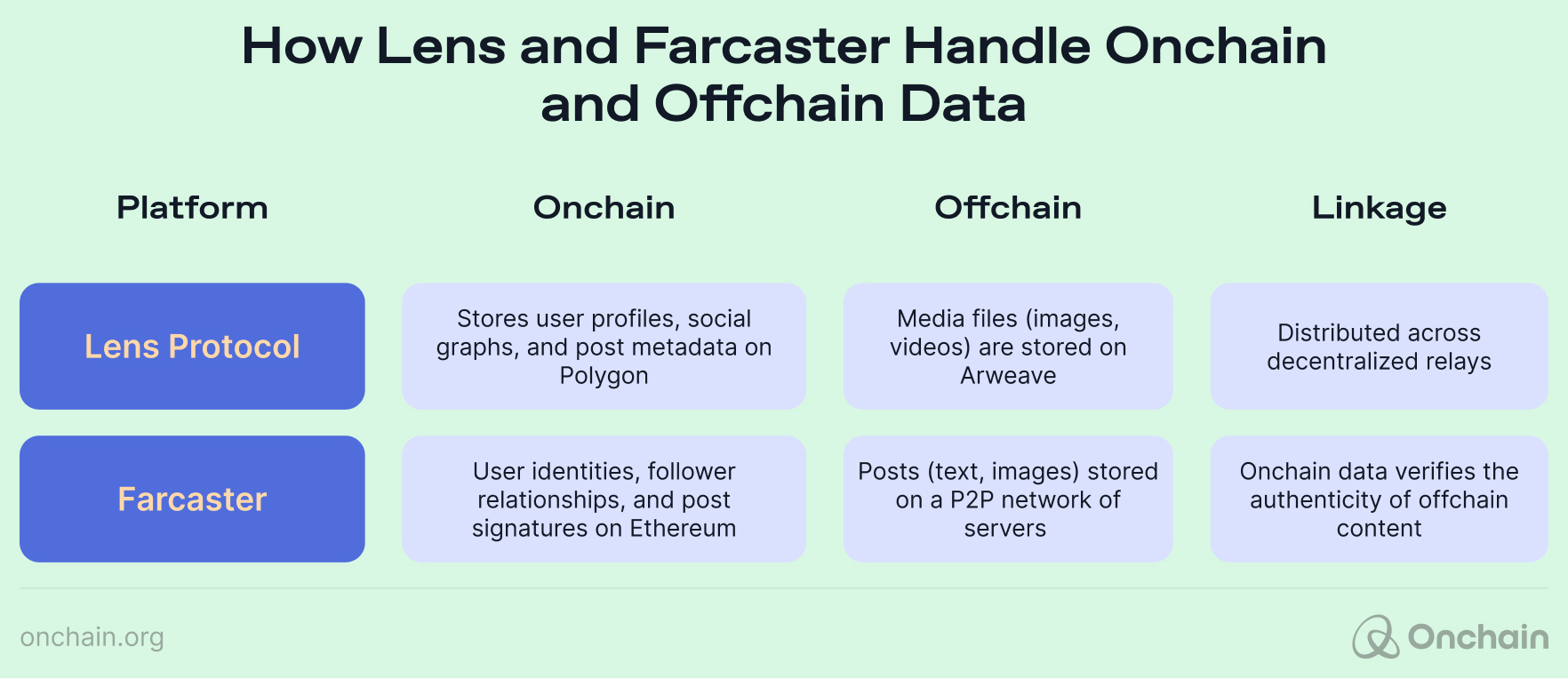
For platforms like these, maintaining both privacy and access control is crucial as they scale. This is where projects like Lit Protocol can help. Lit Protocol offers decentralized access control and encryption solutions that allow developers to manage who can view or interact with sensitive content. By encrypting data and managing access permissions, platforms can ensure that even when content is stored offchain, it remains secure and accessible only to the right users.
This hybrid approach allows platforms to balance decentralization with practicality, offering secure data ownership while avoiding prohibitive storage costs.
Moderation policies in DeSoc: One of the biggest challenges
“In the decentralized social media space, moderation is not a one-size-fits-all solution; it’s about empowering communities to shape their own digital spaces.” – Dr. Ananya Shrivastava, Research Scientist, Onchain
DeSoc projects experiment with diverse strategies, often tailored to their specific platform architecture and user base.
Community-driven moderation: Many platforms embrace a grassroots approach, empowering individual users and community members to play an active role in moderation. For example, Hey.xyz, encourages users to report harmful content, which community moderators can then address.
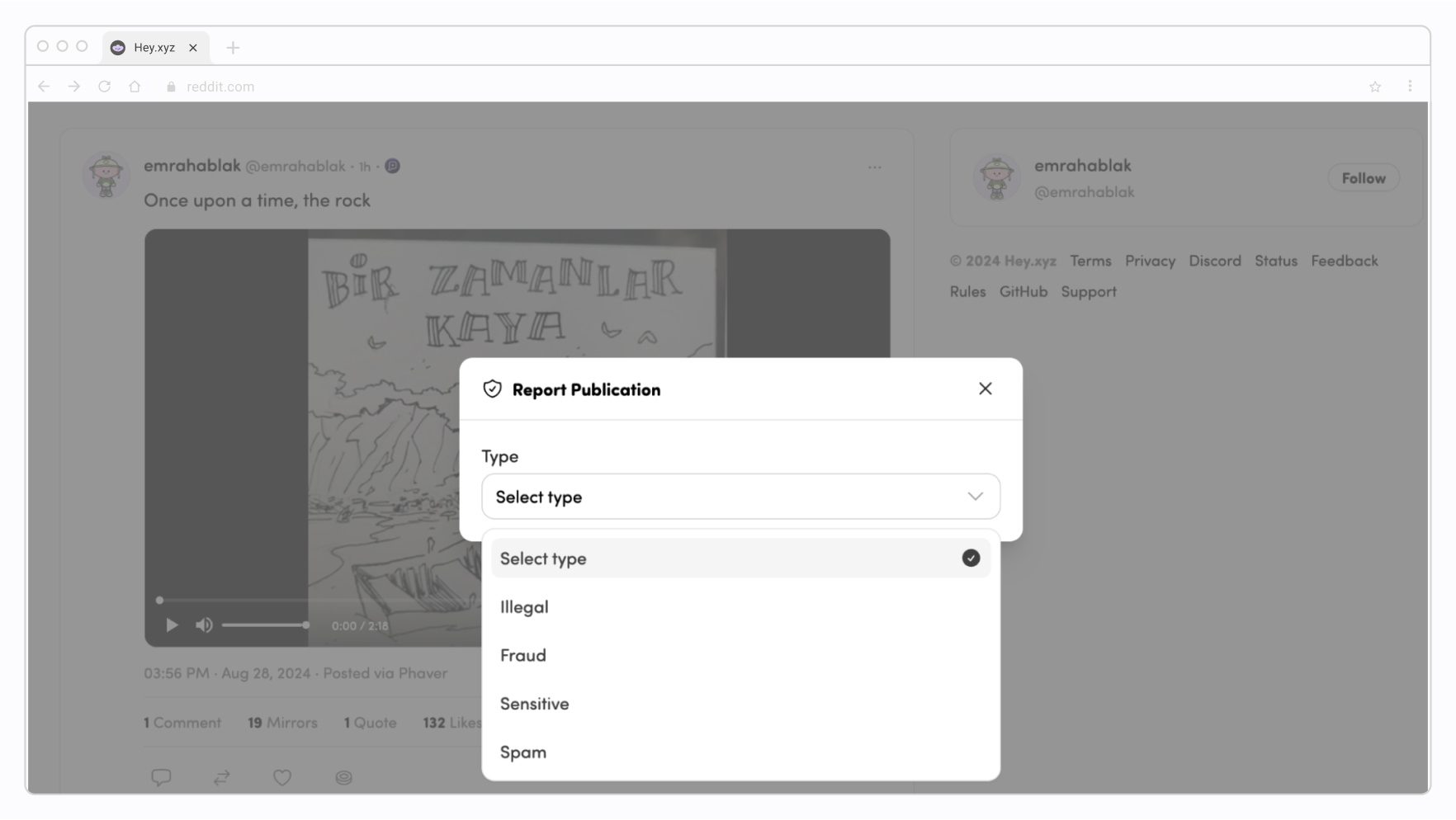
Similarly, the Minds protocol provides some basic moderation tools, and it heavily relies on community flagging and upvoting/downvoting to surface or bury content.
Algorithmic and reputation-based moderation: In order to complement community-driven efforts, platforms often incorporate algorithmic tools like machine learning to detect hate speech, spam, or misinformation and reputation systems.
For example, Steemit uses a voting system whereby users with a higher reputation (Steem Power) have a greater impact on content visibility. Similarly, Bluesky incorporates moderation by reviewing and labeling content across its network, but since it is built on the AT Protocol rather than a blockchain, the content is managed within its decentralized server system. Content labeled by the moderation system remains on the platform but is effectively made less visible or accessible to users.
Despite these efforts, decentralized moderation remains a complex challenge. With no central authority to oversee and enforce rules, issues of accountability and jurisdiction arise, especially when content crosses international borders.
Tokenomics and protocol design: Simplifying the economics of DeSoc
“In the world of DeSoc, tokens can be more than just currency — they’re the lifeblood of communities, the keys to governance, and the tools for creators to thrive.” – Dr. Ananya Shrivastava, Research Scientist, Onchain
Decentralized social networks have diverse economic models, and tokens play a critical role in many of these ecosystems. They go beyond simple payments; tokens can reward participation, govern platforms, and incentivize creators.
Token-centric platforms: Native tokens at the core
For some DeSoc platforms, native project tokens are woven into the fabric of the ecosystem. These tokens fuel everything from engagement to content creation and governance, creating a self-contained economy. A notable example is DeSo, a Layer 1 blockchain designed to support decentralized social applications and manage the significant data demands of social media.
The DeSo token serves multiple roles:
- Creator coins: Users can mint their own coins to monetize their content.
- Social tipping: Fans can tip creators using DeSo tokens.
- Network fees: Activities like posting or profile creation require DeSo tokens.
- Governance: As DeSo shifts towards decentralization, token holders will participate in governance.
Non-token platforms: Building economies without a native token
As you’ve already learned, many platforms have opted to integrate popular, existing tokens like POL, SOL, ETH, or stablecoins. This approach allows them to leverage well-established tokens while still offering robust economic and incentive models.
Lens Protocol and Farcaster are outstanding examples of platforms that have taken this path. What does that mean? We have a popular example:
On Lens Protocol, creators can tokenize their content as NFTs, enabling direct sales or recurring subscriptions, typically using POL for transactions. This allows creators to connect directly with their audiences without introducing a platform-specific token.
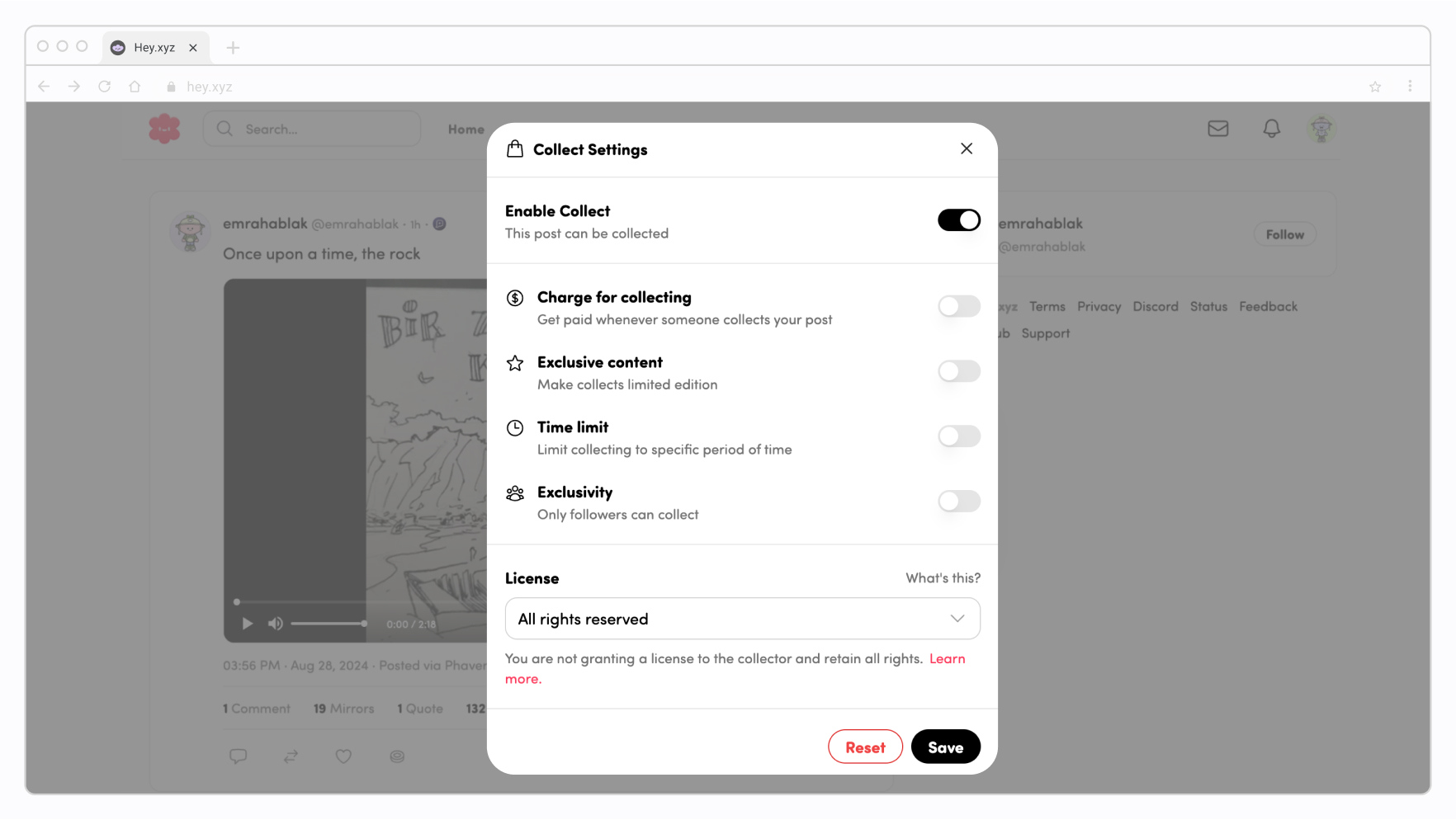
As we explore the broader landscape of decentralized social networks, we see that the presence or absence of a token is insignificant. What really differentiates these platforms from their centralized equivalents is how they empower users to own their digital experiences. This brings us to the heart of what makes DeSoc so revolutionary: Incentive Mechanisms.
3.3 Incentive mechanisms: Redefining engagement in social media
“Users are not the product, but the proprietors. They create, they engage, they govern, and they reap the rewards.” – Dr. Ananya Shrivastava, Research Scientist, Onchain
In the Web2 world, social media platforms profit by turning user data and attention into commodities. Decentralized social media protocols, in contrast, offer a refreshing shift by directly incentivizing users and creators to contribute, participate, and engage.
Let’s explore how these incentive mechanisms are reshaping the social media landscape.
- Direct content monetization
- Micropayments and tipping: Users can tip creators directly with cryptocurrency, providing an immediate and transparent revenue stream.
- On Lens Protocol, creators can receive cryptocurrency payments or tips from their audience for individual posts, comments, or other contributions. Fans can express their appreciation and support directly, fostering more intimate connections.
- Micropayments and tipping: Users can tip creators directly with cryptocurrency, providing an immediate and transparent revenue stream.
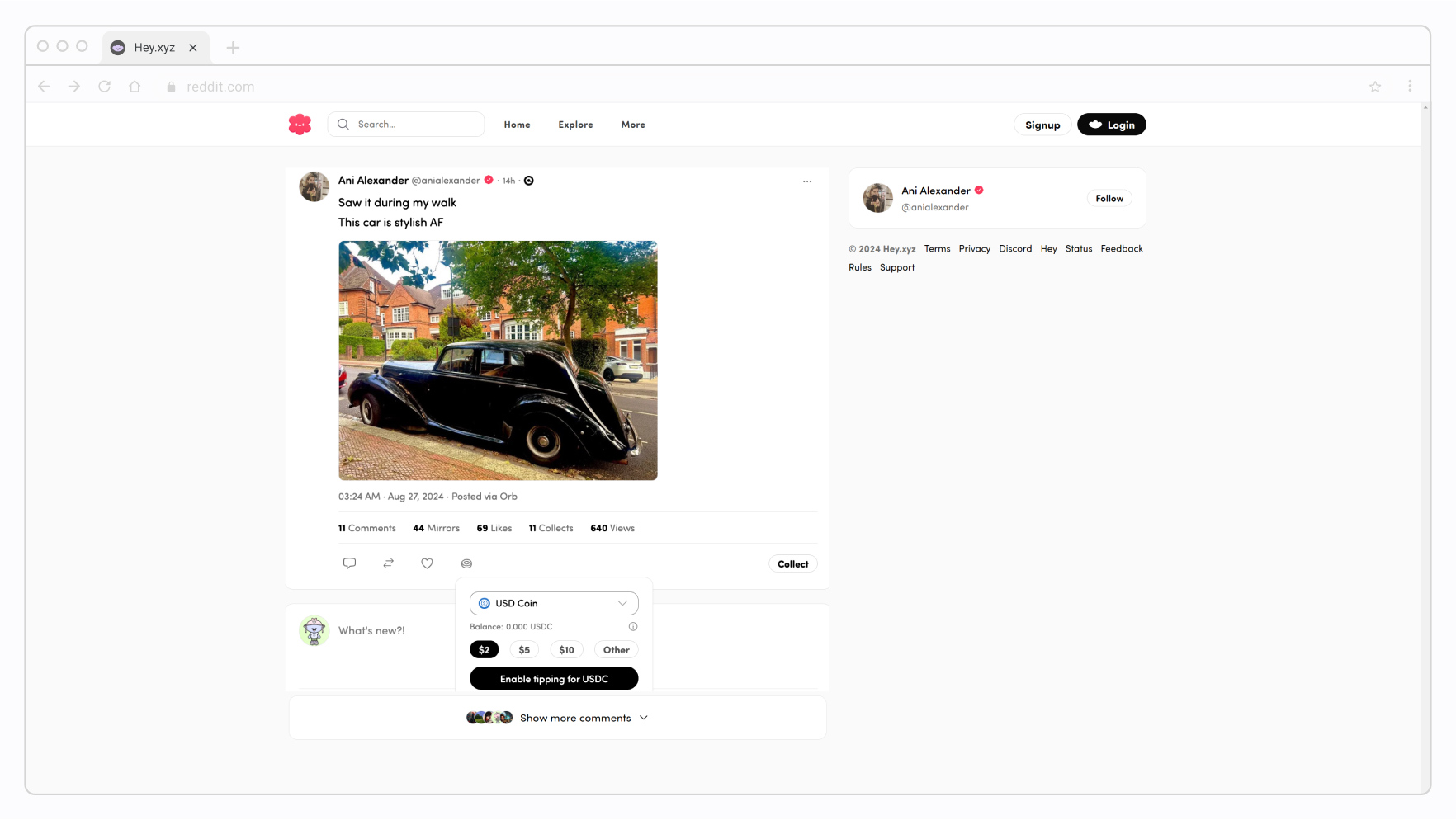
- Subscriptions and memberships: Decentralized platforms are experimenting with subscription models, allowing creators to earn recurring revenue from their loyal audience. They simply purchase a key or NFT that serves as an entrance ticket to the exclusive content or community.
- Example: On Lens Protocol, creators offer token-gated content and exclusive access to their communities. Subscribers unlock premium content and additional privileges with an NFT or key they purchased.
- NFTs and digital collectibles: NFTs allow creators to monetize their digital creations, including art, music, and other unique content.
- On Lens Protocol, creators can mint their posts as NFTs and offer them to their audience as unique digital collectibles. Fans can own a piece of their favorite creator’s work, creating a sense of connection and investment.
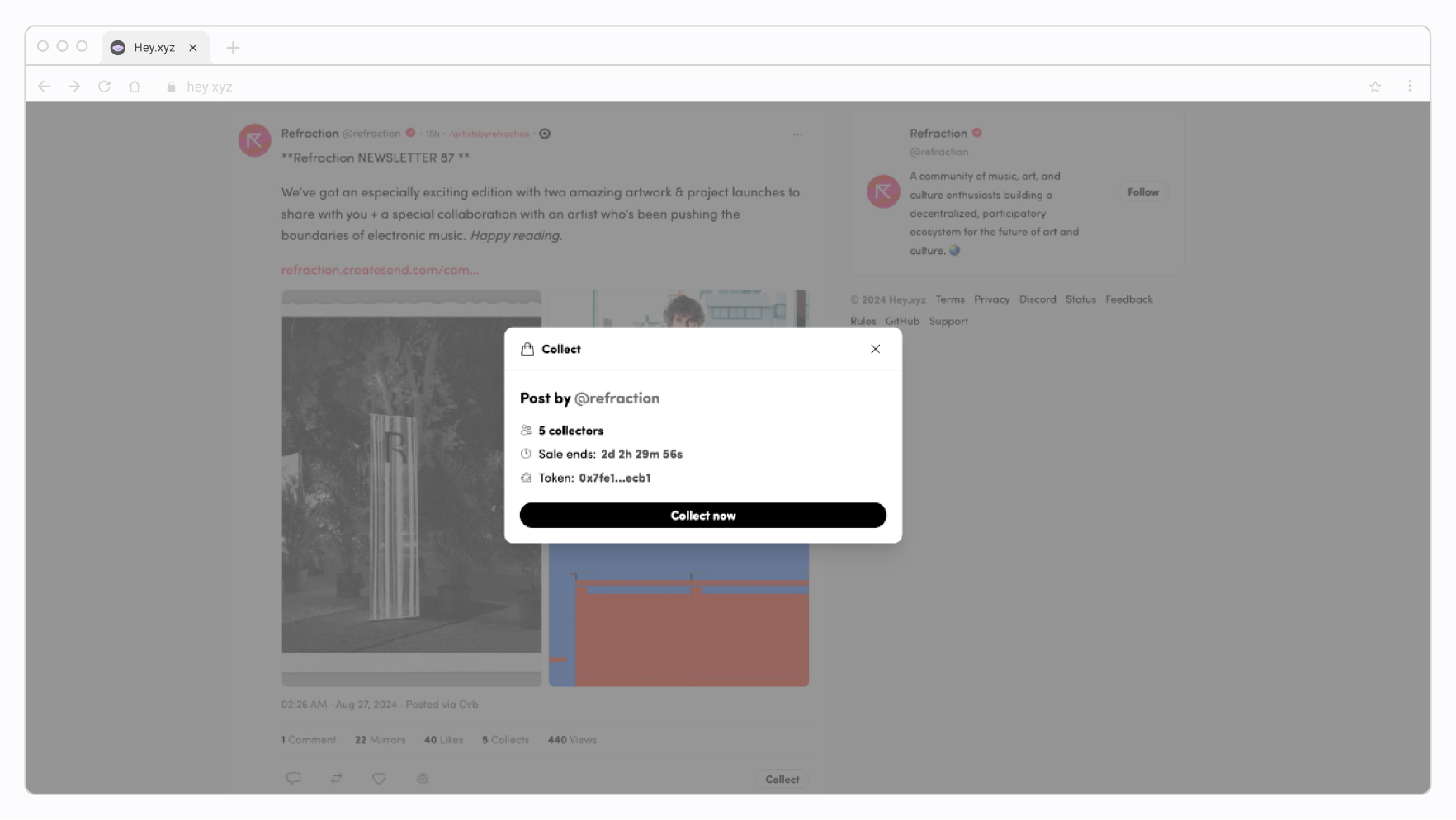
- Token-based rewards & community governance
- Engagement-driven incentives: DeSoc platforms prioritize rewarding active participation and fostering community-driven governance. These platforms leverage blockchain and other innovative technologies to ensure user contributions like content creation, interaction, or curation are recognized and rewarded. For example, DeSo, Steemit, and Hive reward users with tokens for content creation and engagement. Tokens can be traded or used within the ecosystem. Farcaster’s Warpcast introduces “Warps,” an in-app currency that users earn through participating in and using various platform activities, further enhancing user engagement and value.
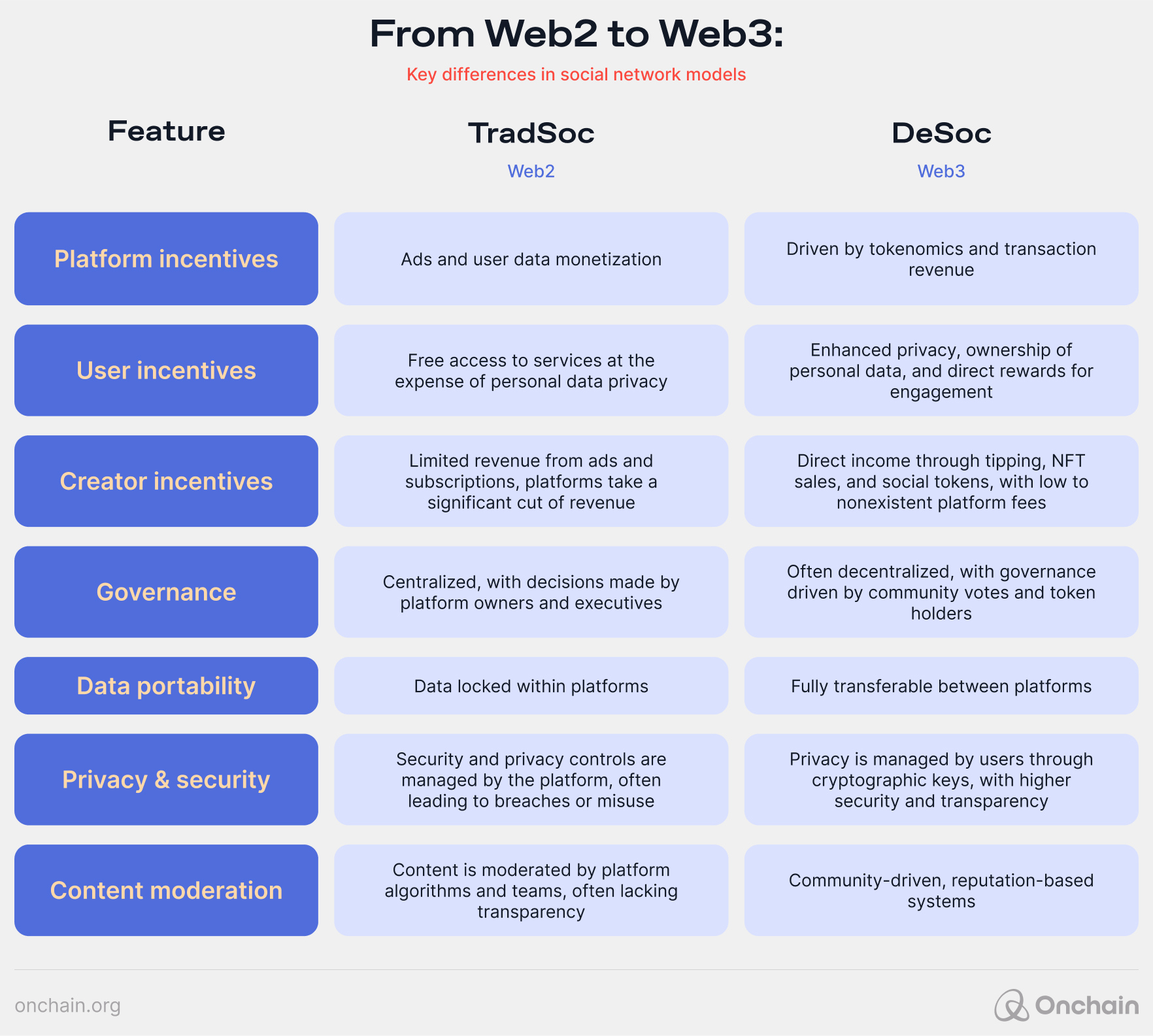
Key implications for DeSoc entrepreneurs and founders
Following are some practical tips when conceptualizing a DeSoc application:
- Popularity doesn’t solve everything: Even popular non-blockchain social networks like Bluesky face issues like data loss if their servers go down. Blockchain can help fix this.
- Blockchain is costly: Storing everything onchain isn’t practical. Use blockchain for critical functions like identity. For storage, explore cheaper chains with adoption (EVM-compatible, Solana, TON, SUI) or offchain solutions like IPFS or Arweave.
- Moderation without a boss: Decentralized platforms need strong community-driven moderation. Equip your users with the tools to govern their spaces effectively.
- No need for a native token: Some of the most successful DeSoc projects, like Farcaster, Lens, OpenSocial, and DSCVR, thrive without a native token. Focus on building a valuable product, not launching a token.
- Incentivize wisely: Keep your users engaged with clear incentives through tokens, NFTs, or reputation systems to drive growth and platform sustainability.
This chapter gave you a comprehensive overview of frameworks, concepts, and factors affecting decentralized platforms. We’ve examined the practical and technical aspects and shared the benefits, mainly for creators and users.
You’re now ready to evaluate DeSoc’s business aspects. Read on to discover the various schemes for generating revenue as a protocol builder, a creator, or a user. Get familiar with the models used in successful apps, as well as their advantages, challenges, and uniqueness.